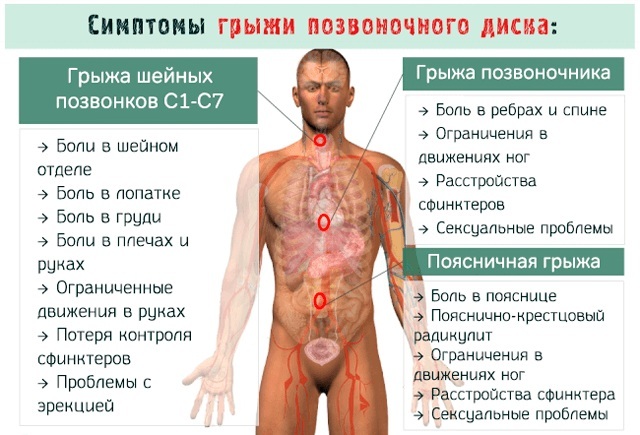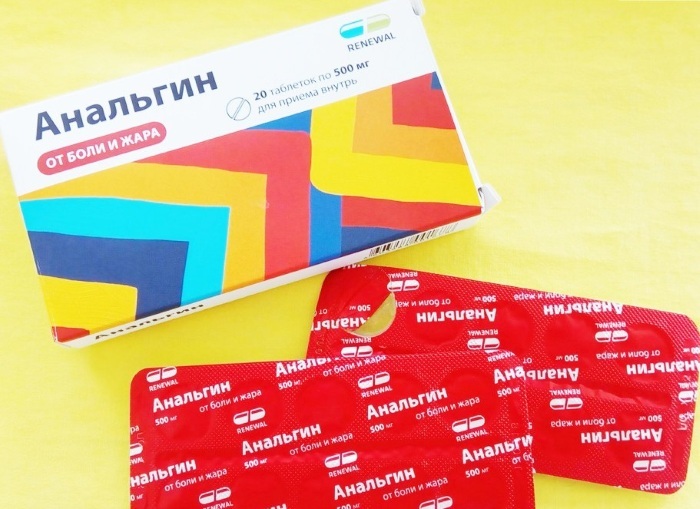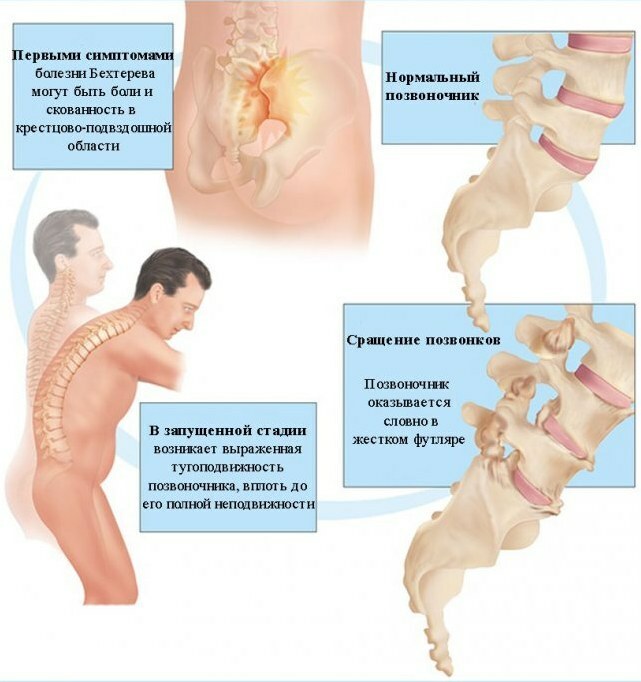Curvature of the spine in adolescent children (scoliosis) is a chronic disease of the musculoskeletal system, which is a form of posture disorder. This disease most often develops during the period of the most intensive growth of the child, when the formation of the bone tissue of the spinal column occurs. This disease is treated by a pediatric orthopedic surgeon.
If necessary, an endocrinologist or a neuropathologist may be involved in the therapeutic process, depending on the reasons that provoked this pathology, as well as the current symptomatology. Scoliosis can be congenital, post-traumatic or acquired in origin.
Record content:
-
1 Views
- 1.1 C-shaped scoliosis
- 1.2 S-shaped type of scoliosis
- 1.3 Z-shaped scoliosis
- 1.4 Thoracic scoliosis
- 1.5 Lumbar scoliosis
- 1.6 Thoracolumbar scoliosis
-
2 Stages and degrees
- 2.1 1st degree
- 2.2 2nd degree
- 2.3 Grade 3
- 2.4 4 degree
- 3 Symptoms and Signs
- 4 Causes
- 5 Diagnostics
-
6 Treatment methods
- 6.1 Massage
- 6.2 Exercise "Boat"
- 6.3 Rocking the body on the crossbar
- 6.4 Corsetting
- 6.5 Surgery
- 7 Possible consequences and complications
- 8 Spine Curvature Video
Views
Curvature of the spine in adolescents has a species classification, which is carried out on the basis of the clinical manifestations of this disease. The type of ailment is determined by the results of X-ray diagnostics. Based on the data obtained, an effective scheme for further treatment is formed.
C-shaped scoliosis
This type of curvature of the spine is characterized by the presence of left-sided or right-sided scoliosis. In this case, the deformation of the spinal column occurs only in one direction. During a visual examination of the X-ray of the patient, it is clearly visible that his spine is bent in the shape of the letter "C".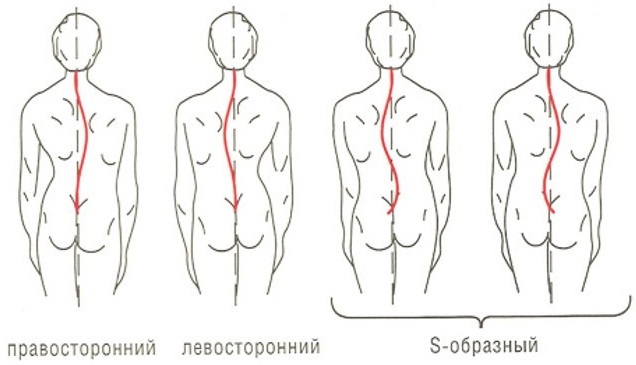
In most cases, this type of scoliosis occurs in adolescents with the initial stage of spinal column deformity. This type of disease responds well to physiotherapy and surgical treatments.
S-shaped type of scoliosis
- the figurative type of curvature is characterized by a more pronounced violation of the anatomically correct shape of the spinal column. Patients with this type of pathology suffer from severe spinal deformity. The clinical picture of this type of scoliosis is characterized by the presence of curvature of the spinal column simultaneously in 2 of its departments. For example, left-sided deformity in the chest area and right-sided scoliosis in the lumbar region. This type of disease is difficult to physiotherapeutic and surgical methods of treatment, as it is considered an advanced form of the disease.
Z-shaped scoliosis
This type of curvature of the spine is extremely rare in adolescent children,
since the clinical manifestations of this disease are characterized by the emergence of 3 deformity arcs at once. An external examination of the spinal column reveals a severe form of scoliosis, the patient's spine itself resembles the Latin letter "Z".
This type of deformational changes in the musculoskeletal system is accompanied by a large number of complications, most of which are associated with dysfunctional disorders of internal organs.
Thoracic scoliosis
Thoracic scoliosis is a curvature that only affects the thoracic spine. At the same time, all other parts of the child's spinal column are in a normal state and have no signs of pathological changes.

Scoliosis of the thoracic region is one of the most common types of diseases of the musculoskeletal system, which are common among adolescent children.
Lumbar scoliosis
Lumbar scoliosis is a disease of the spine in which signs of spinal curvature are found only in the lumbar spine. This type of pathology occurs in adolescents who sit incorrectly at their desks, do not monitor their posture while writing.
Thoracolumbar scoliosis
Thoracolumbar scoliosis is a disease of the musculoskeletal system that occurs due to the curvature of the spine in the thoracolumbar junction. This type of pathology in medical practice is much less common than deformation of the exclusively thoracic or lumbar spine.
Stages and degrees
Curvature of the spine (treatment of pathology is complex) has several degrees of severity, the definition of which is carried out according to the results of radiography.
1st degree
A diagnosis in the form of scoliosis of 1 severity is given to a teenager if, after the diagnosis, it was found that his spinal column is curved at an angle of 1 to 10 degrees.
In this case, the disease is not considered severe, and the detected changes in the musculoskeletal system can be eliminated with the help of a long course of physiotherapy. Scoliosis of the 1st degree is quite common in adolescents who are very tall, or sit at a desk for a long time, leaning on one side.
2nd degree
Scoliosis of the 2nd degree of severity is a pathological condition of the musculoskeletal system, in which the angle of inclination of the spine ranges from 11 to 25 degrees.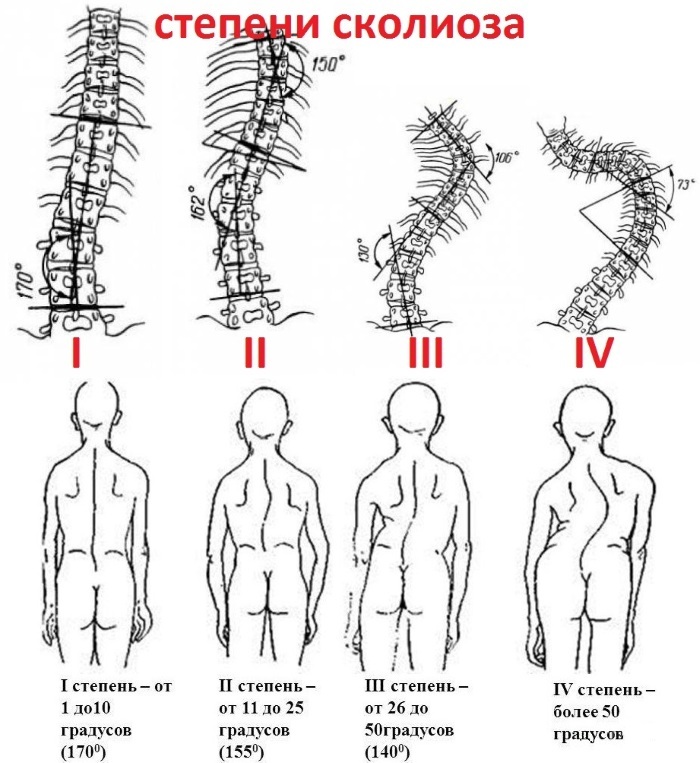
Such changes in the structure of the spinal column are not yet critical, but at the same moment the teenager already begins to experience the first symptoms associated with the wrong direction of the spine. Scoliosis of the 2nd degree of severity is still subject to treatment with the help of physiotherapy techniques and surgery.
Grade 3
Scoliosis of the 3rd degree of severity is characterized by the presence of a curvature angle, which is equal to indicators from 26 to 50 degrees. These are already serious deformation changes in the spinal column, which entail complications, associated with the displacement of internal organs, a violation of their functions to ensure stable life organism.
Scoliosis of the 3rd degree of severity is treated by performing surgical operations aimed at restoring the anatomically correct shape of the spine.
4 degree
Scoliosis of the 4th degree of severity is an extremely severe pathology of the spinal column, which is characterized by the presence of a curvature of more than 50 degrees.
In this case, the patient's spine has signs of pronounced deformation with violation of the shape of the chest, displacement of the rib cage, compression of internal organs. Scoliosis of the 4th degree is not always possible to eliminate even with the use of the method of surgical intervention.
Symptoms and Signs
Curvature of the spine (treatment of this disease is prescribed by an orthopedic surgeon, surgeon or traumatologist) is almost imperceptible if the disease has initial stages of development.
As scoliosis progresses in an adolescent child, the following signs of pathology appear:
- pronounced stoop;
- curvature of the spinal column in one direction, which can be detected on an x-ray;
- violation of gait;
- trampling on exclusively the right or left boot;
- one shoulder is higher than the second, which is due to a violation of the line of the shoulder girdle;
- pronounced skewing of clothing with its constant displacement to one side;
- a slight elevation of the right or left side of the chest (for example, if a teenager has scoliosis of the thoracic spine);
- a feeling of aching pain in the muscle tissue of the back, which is a consequence of the deformation of the spine.
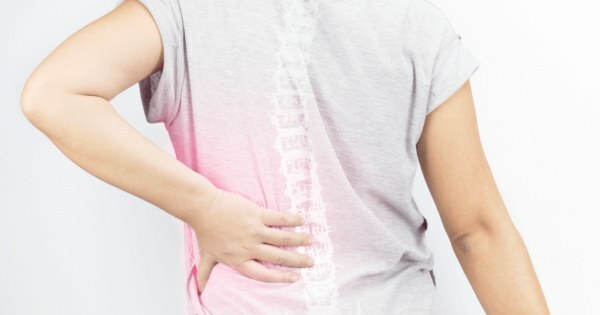 The presence of meteorological dependence can also be a symptom of scoliosis. For example, when, before a quick change in weather conditions, a child begins to complain of a feeling of discomfort in the area of the vertebrae that have undergone pathological deformation.
The presence of meteorological dependence can also be a symptom of scoliosis. For example, when, before a quick change in weather conditions, a child begins to complain of a feeling of discomfort in the area of the vertebrae that have undergone pathological deformation.
Causes
Curvature of the spine (treatment of this condition takes place over a long period of time) can develop during the period of intrauterine formation of the fetus, and in adolescence there is an aggravation disease. Acquired scoliosis occurs due to a previous injury or exposure to a number of negative factors.
There are the following reasons that can cause deformation changes in the shape of the spinal column:
- poliomyelitis in early childhood (this viral disease disrupts the functions of peripheral nerves responsible for the performance and development of individual elements of the musculoskeletal apparatus);
- muscle dystrophy caused by a genetic predisposition, or the lack of full development of the muscles of the thoracic spine;
- prolonged stay in the same position, which initially provides for the wrong curvature of the spine (for example, tilting the trunk to one side while at school desk);
- endocrine and metabolic disorders that cause abnormal skeletal development;
- increased compression load on the vertebrae;
- hereditary predisposition, when one of the close relatives of the child has a similar disease of the spine;
- spinal column injuries that lead to a disruption in the integrity of the spinal cord;
- spinal damage during childbirth (in this case, the symptoms of scoliosis are aggravated in adolescence, when the child enters the phase of active growth).
According to medical statistics, in 80% of cases, scoliosis is of idiopathic origin. This means that doctors are unable to establish a specific cause that provoked deformative changes in the spine.
According to the results of a comprehensive examination, the child does not show the presence of concomitant diseases of the body that affect the process of skeletal formation.
Diagnostics
Spinal curvature (treatment of this disease begins immediately after the diagnosis is made) is determined using hardware examination methods. The table below lists the main diagnostic methods, the use of which allows you to detect the first signs of deformation changes in the spinal column.
| Diagnostics type | Survey procedure |
Examination by a specialist |
A child with external signs of curvature of the spine undergoes a preliminary examination by an orthopedic surgeon, traumatologist or surgeon. The doctor palpates the spinal column, determines the possible presence or absence of deformation changes. If necessary, the patient is assigned to undergo a hardware examination. |
| X-ray | X-ray is one of the proven and reliable ways to diagnose scoliosis in adolescent children. Even if the child has the initial stage of this disease, then the corresponding angle of the pathological inclination of the spine will be noticeable on the X-ray. This diagnostic method is absolutely safe, and the average duration of its implementation is from 5 to 10 minutes. Deciphering of the obtained data is carried out by a radiologist. The average cost of radiography is in the range from 1200 to 2000 rubles.
|
| CT and MRI | These types of diagnostics are one of the most informative, since in the digital format, structural changes in the spinal column, its deformation in one direction or another, are displayed. With the help of CT and MRI, you can simultaneously study the state of internal organs, the position of which is disturbed by the curvature of the spine. The cost of these diagnostic methods is within 6500 rubles. |
| Myelography | Myelography is prescribed for those patients who have signs of complications of scoliosis associated with the restriction of the lumen inside the spinal canal. This research method provides for radiopaque diagnostics of the cerebrospinal fluid canals of the spinal cord. The average cost of myelography is from 3000 rubles. |
| Ultrasound | Performing ultrasound diagnostics is advisable in cases where an adolescent child suffers from grade 3 or 4 scoliosis. In the presence of such a clinical picture, the risk of pinching and displacement of vital organs, the functions of which may be impaired, increases. The decision to use this diagnostic method is made by a pediatrician, surgeon or traumatologist, who carries out a preliminary examination of the child. The average cost of this examination is from 900 to 1400 rubles. depending on how many internal organs are in the potential risk zone. |
| Spirometry | Spirometry is prescribed for children who have a curvature of the spine located in the thoracic region. The purpose of diagnostics is to study the rate of respiration indicators, as well as to measure the internal volume of the lungs. Measurements of quality indicators are carried out during the period of calm breathing, with maximum ventilation of the airways and at the time of forced expiration. The average cost of spirometry is 1,800 rubles. |
It is enough for an experienced surgeon, traumatologist or pediatrician to conduct an external examination of the child to detect the first signs of scoliosis. A more detailed X-ray examination confirms the presence of a curvature of the spine. Comprehensive diagnostics using CT, MRI techniques, myelography, ultrasound is advisable in complicated cases when the deformity of the spinal column has reached 3 or 4 degrees of severity.
Treatment methods
The main methods of treating scoliosis are to undergo a course of massages, perform therapeutic exercises, change your lifestyle and constantly monitor your posture.
These methods of therapy are effective if a teenager has grade 1-2 scoliosis. More serious deformity of the spinal column requires constant wearing of a corset, as well as surgical intervention.
Massage
Therapeutic massage is prescribed for adolescents who have the first signs of spinal curvature. The purpose of this physiotherapy method is to thoroughly warm up the deformed vertebrae, to prevent stagnant and inflammatory processes in muscle tissue.
The duration of the massage course is determined by the attending physician, but on average it is 1-2 months. The cost of 1 physiotherapy session is within 395 rubles.
Exercise "Boat"
Regular exercise in medical gymnastics allows you to restore the correct shape of the spinal column without the use of radical methods of therapy.
This exercise is performed as follows:
- The child lies on his stomach.
- The arms should be extended forward and the toes brought together.
- On inspiration, the muscles of the back are strained with simultaneous deflection of the spine.
- On exhalation, the child's body should return to its original position.
This exercise is performed on a firm, level floor. During the tension of the back muscles, the teenager should try to raise his arms and legs to the maximum height in order to carry out a high-quality training of the spine and muscle corset.
Rocking the body on the crossbar
To perform this exercise of medical gymnastics, you will need a regular horizontal bar. The teenager should fix his hands on the crossbar, and lift his legs off the ground. While hanging on the bar, the child should perform circular movements with his whole body, and also swing the body back and forth.
This exercise perfectly stretches the spine, prevents further progression of scoliosis, and also eliminates the already acquired signs of curvature. Hang on the horizontal bar for 20-30 minutes. in the morning and in the evening.
Corsetting
Wearing a corset is one of the effective methods of treating scoliosis of 2-3 degrees of severity. This type of therapy consists in the fact that the child's body is fixed with a special corset, which compresses the spinal column, giving it a potentially correct shape for further growth.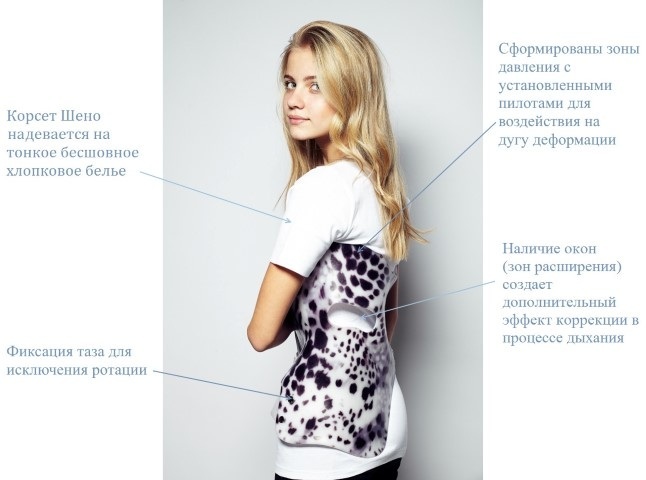
The main disadvantage of this method of treatment is that in order to achieve a positive result, the child must wear a corset for 23 hours a day. The orthopedic product is removed only for the duration of hygiene procedures. Corsetting is used for scoliosis of the thoracic spine. The average cost of orthopedic corsets is 3650-4500 rubles.
Surgery
Surgery is a radical treatment for grade 3 and 4 scoliosis. The principle of the operation is that the surgeon performs the alignment of the spinal column by fixing it with the help of special metal structures.
Titanium plates are attached on both sides of the spine and are connected to the bone tissue using the screw connection method. This type of surgery is considered difficult and quite traumatic.
Surgery is performed under the influence of general anesthesia. The postoperative rehabilitation period lasts at least 6 months. At the same time, the child regularly undergoes preventive examinations by a pediatric surgeon and orthopedist. The average cost of this type of treatment is 610 thousand. rub.
Possible consequences and complications
Lack of timely treatment can lead to further progression of scoliosis. A particularly rapid development of the curvature of the spine is observed during the active growth phase of the adolescent organism.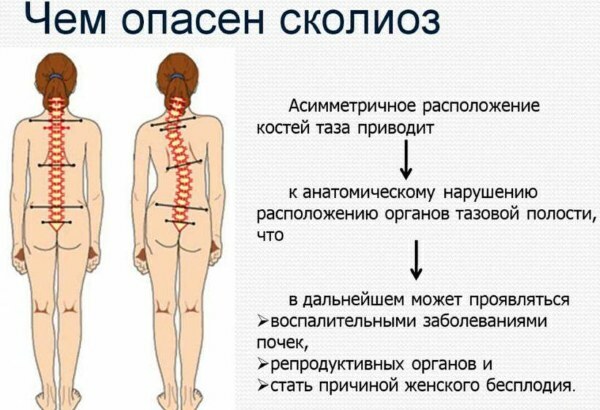
In this case, the occurrence of the following complications is not excluded:
- deformation of the chest;
- violation of the shape of the rib cage;
- displacement of internal organs located in the chest and abdominal cavity;
- the occurrence of an intervertebral hernia;
- infringement of peripheral nerves;
- compression of arterial and venous vessels, which entails impaired blood circulation;
- decrease in lung volume, if complications are caused by scoliosis of the thoracic spine;
- getting a lifelong disability and the inability to lead a full life.
Curvature of the spine is a severe pathology of the musculoskeletal system, which is characterized by its pronounced deformation. Scoliosis occurs in adolescent children who do not monitor their posture, sit for a long time, and do not pay due attention to sports.
Treatment of curvature of the spine includes undergoing a course of therapeutic massage, performing gymnastic exercises to stretch the spinal column. Wearing a corset also allows you to achieve a positive result, but provides for a round-the-clock stay in this orthopedic product.
For scoliosis of 4 degrees of severity, the method of surgical alignment of the spine is used, which is distinguished by its high cost, traumatism and long-term rehabilitation.
Spine Curvature Video
Malysheva on scoliosis:

